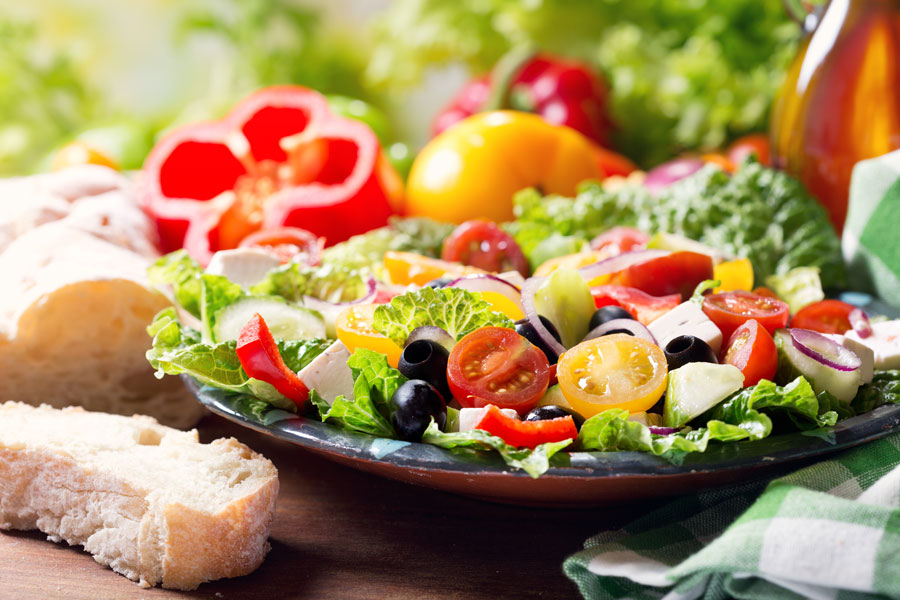Up until a couple of years ago, salads were directly linked to diets, because of their low calories income. But salads can also be tasty and original, switching ingredients and adding different vegetables, fruits and other healthy condiments to the plain lettuce. Nutririonists recommend to consume from 5 to 9 portions of fruit and vegetables per day, so a well-balanced salad can be the right way to go.
Suggestions
The main ingredient should be a green leaf vegetable (lettuce, spinach, endive, radicchio) that, besides being low-calorie, are a good source of fibres and give volume to the dish.
Then, almost every vegetable can be added to the salad, finely chopped: fennel, green beans, peas, carrots, radishes, broccoli, zucchini, asparagus, artichokes, avocado, tomatos, bell peppers, cucumber. Intensly colored vegetables (red and yellow) contain a great amount of bioflavonoid, natural ingredients that are good for your health. Potatoes and olives give taste to the dish, but are not recommended in case of a low-calorie diet.
All the fruits, such as berries, apples, pears, oranges, pineapples and raisins can add a sweet-sour flavor and, most importantly, vitamins and antioxidants. To add nutrients to the dish, proteins should be added: hard boiled eggs, chicken, beef or turkey meat, prawns, tuna fish, fresh cheese suche as mozzarella, ricotta or cottage cheese or aged cheese (minding that they contain a higher amount of salt).
A good idea is to add to the salad nuts, almonds, cashews or other seeds (sesame, flex, sunflower, pumpink) rich in fatty acids, minerals and trace elements that provide energy without heaviness.











